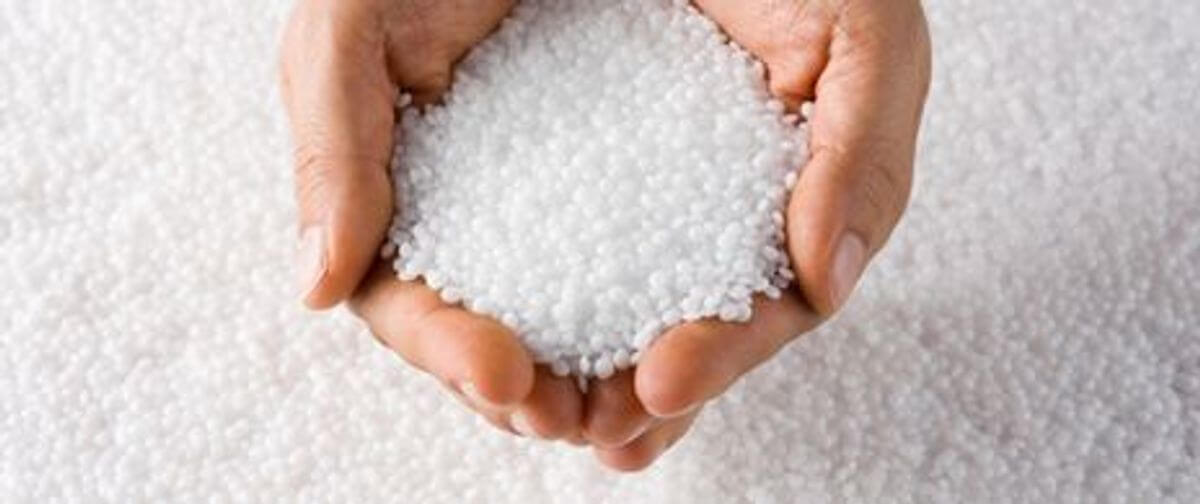PETE
Polyethylene Terephthalate (PET or PETE) is clear, tough and has good gas and moisture barrier properties making it ideal for carbonated beverage applications and other food containers. The fact that it has high use temperature allows it to be used in applications such as heatable pre-prepared food trays. Its heat resistance and microwave transparency make it an ideal heatable film. It also finds applications in such diverse end uses as fibers for clothing and carpets, bottles, food containers, strapping, and engineering plastics for precision-molded parts.
HDPE
High Density Polyethylene (HDPE) is used for many packaging applications because it provides excellent moisture barrier properties and chemical resistance. However, HDPE, like all types of polyethylene, is limited to those food packaging applications that do not require an oxygen or CO2 barrier. In film form, HDPE is used in snack food packages and cereal box liners; in blow-molded bottle form, for milk and non-carbonated beverage bottles; and in injection-molded tub form, for packaging margarine, whipped toppings and deli foods. Because HDPE has good chemical resistance, it is used for packaging many household as well as industrial chemicals such as detergents, bleach and acids. General uses of HDPE include injection-molded beverage cases, bread trays as well as films for grocery sacks and bottles for beverages and household chemicals.
PVC
Polyvinyl Chloride (PVC) has excellent transparency, chemical resistance, long term stability, good weatherability and stable electrical properties. Vinyl products can be broadly divided into rigid and flexible materials. Rigid applications are concentrated in construction markets, which includes pipe and fittings, siding, rigid flooring and windows. PVC’s success in pipe and fittings can be attributed to its resistance to most chemicals, imperviousness to attack by bacteria or micro-organisms, corrosion resistance and strength. Flexible vinyl is used in wire and cable sheathing, insulation, film and sheet, flexible floor coverings, synthetic leather products, coatings, blood bags, and medical tubing.
LDPE
Low Density Polyethylene (LDPE) is predominantly used in film applications due to its toughness, flexibility and transparency. LDPE has a low melting point making it popular for use in applications where heat sealing is necessary. Typically, LDPE is used to manufacture flexible films such as those used for dry cleaned garment bags and produce bags. LDPE is also used to manufacture some flexible lids and bottles, and it is widely used in wire and cable applications for its stable electrical properties and processing characteristics.
PP
Polypropylene (PP) has excellent chemical resistance and is commonly used in packaging. It has a high melting point, making it ideal for hot fill liquids. Polypropylene is found in everything from flexible and rigid packaging to fibers for fabrics and carpets and large molded parts for automotive and consumer products. Like other plastics, polypropylene has excellent resistance to water and to salt and acid solutions that are destructive to metals. Typical applications include ketchup bottles, yogurt containers, medicine bottles, pancake syrup bottles and automobile battery casings.
PS
Polystyrene (PS) is a versatile plastic that can be rigid or foamed. General purpose polystyrene is clear, hard and brittle. Its clarity allows it to be used when transparency is important, as in medical and food packaging, in laboratory ware, and in certain electronic uses. Expandable Polystyrene (EPS) is commonly extruded into sheet for thermoforming into trays for meats, fish and cheeses and into containers such as egg crates. EPS is also directly formed into cups and tubs for dry foods such as dehydrated soups. Both foamed sheet and molded tubs are used extensively in take-out restaurants for their lightweight, stiffness and excellent thermal insulation.
Other Plastics
There are many other plastics beyond the most common ones described above, for example nylon, ABS copolymers, polyurethanes, and polymethyl methacrylate.

